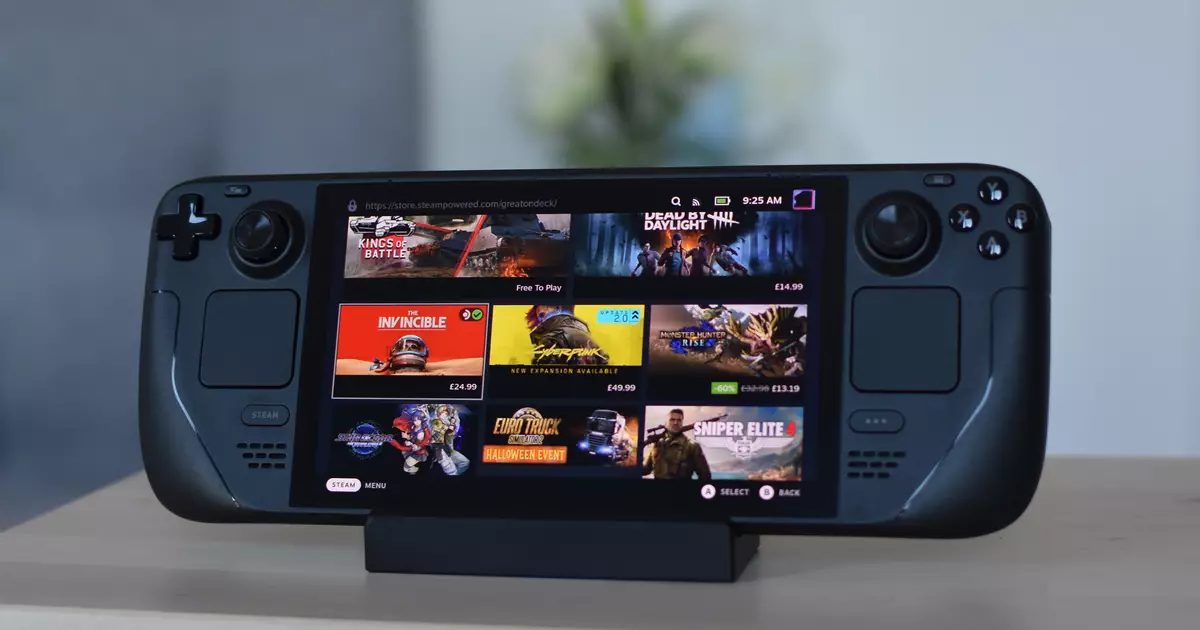The realm of gaming hardware is perpetually evolving, with industry giants constantly seeking to push technological boundaries. Recently, emerging reports have hinted that Valve, the renowned video game developer and hardware manufacturer, may be exploring new horizons by branching out from their traditional x86 architecture to ARM processors. This potential shift, if realized, could have profound implications for both their existing products and the future of gaming hardware.
The architecture of ARM chips is known for its power efficiency, which makes it an attractive option for devices where battery life is paramount. Given that Valve has already made strides in portable gaming with its Steam Deck, the adoption of ARM processors could feasibly enhance the performance and longevity of future devices. For instance, a new iteration of the Steam Deck outfitted with ARM chips could extend gaming sessions significantly without the need for constant recharging—an advantage that would surely resonate with on-the-go gamers.
Moreover, the versatility of ARM architecture offers exciting possibilities, particularly when considering its compatibility with the Android operating system. This could open doors for integrating a wider array of mobile games into Valve’s gaming ecosystem, thereby enriching the Steam library and providing users with an unparalleled gaming experience. Currently, the limited options available on x86-based gaming systems for mobile titles often require cumbersome emulation or workaround solutions; an ARM-centric approach could streamline this process and introduce a world of mobile games to PC gamers.
However, the transition to ARM architecture is not without significant challenges. The majority of contemporary PC games are designed with x86 processors in mind, and adapting them to run on ARM could lead to performance issues. Although modern ARM chips are competitive in power, achieving the same level of performance as their x86 counterparts is not guaranteed when running software that was not originally designed for them. This raises concerns about frame rates and overall gameplay experience, particularly for demanding titles.
Valve’s Proton, which serves as the compatibility layer for running Windows games on SteamOS, faces a substantial hurdle if the platform were to embrace ARM processors. Currently, Proton excels at translating and running x86 games on a Linux-based system. However, the switch to ARM would potentially require a more comprehensive emulation process that could hinder performance. This is a classic case of balancing innovation with practicality: while the allure of new technology is enticing, Valve must carefully navigate the intricacies of performance and compatibility to ensure a smooth user experience.
Despite these challenges, the speculation around Valve’s plans has sparked interest within the gaming community. Valve has a history of hardware experimentation, as evidenced by their previous releases, such as the Valve Index VR headset and the Steam Deck. However, it is crucial to consider the timeline of any potential ARM-based device. Valve representatives previously indicated that a next-generation Steam Deck might still be years away, prompting questions about the feasibility of launching an ARM-focused device in the near future.
While the idea of an ARM-powered Steam Deck remains uncertain, a standalone VR headset leveraging ARM technology could be more plausible. Given ARM’s increasing prevalence in high-performance systems like the latest Mac computers, it is reasonable to surmise that Valve may channel this efficiency into future hardware, particularly within the realm of wireless VR, where mobility and battery life are greatly prioritized.
Valve’s potential shift towards ARM architecture introduces a blend of thrilling opportunities and complex challenges. The allure of enhanced power efficiency and expanded gaming options through easier access to mobile titles paints an exciting picture for gamers. However, Valve must overcome the technical obstacles associated with maintaining performance and compatibility across a diverse array of games that predominantly rely on x86 architecture. While the specific nature of Valve’s next hardware endeavor remains speculative, it is clear that any movement towards adopting ARM could serve as a significant milestone in the evolution of gaming technology—one that firearms in innovation while paying heed to the foundational principles of performance and user experience.


Leave a Reply